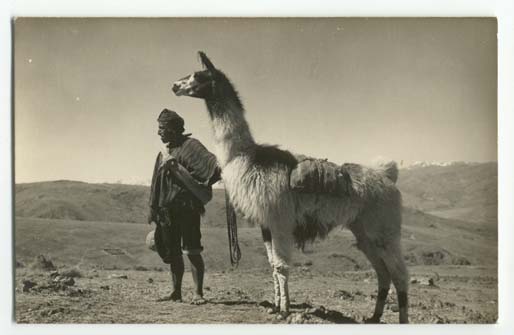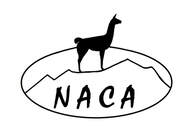Our History
“In the Andes, Quechua and Aymara are the two primary languages. Ccara, cara, and k’ara
are some of the words used to name the breed of llama that is our working Ccara llama.
Translations from these languages to English presented some difficulty and “Ccara” is the
spelling that best named this llama.”
“In the Andes, Quechua and Aymara are the two primary languages. Ccara, cara, and k’ara
are some of the words used to name the breed of llama that is our working Ccara llama.
Translations from these languages to English presented some difficulty and “Ccara” is the
spelling that best named this llama.”
The term “Ccara” is a breed type designation used in South America to describe this animal, specifically llamas that were developed through selective breeding over the course of thousands of years for their ability to transport freight over long distances in rugged terrain and at high altitudes.
Unfortunately, their numbers started to dwindle and many of the best representatives of the breed today have an alarming concentration of common ancestors. This presents a formidable challenge for those engaged in breeding Ccara Llamas and who believe the gene pool should be expanded rather than continuing to shrink.
The group that initiated this registry were a group of breeders and packers who were concerned about the problem and who recognized the need for a registry to aid in the search for diverse genetics. With many years of experience – in some cases entire lifetimes they had been conducting field studies of the mechanics of motion in the working llama.
In 2003, four like-minded people joined together to discuss these principles. The long-term aim of the group was to develop a system of classifying llamas based on physical characteristics leading to athletic ability. In the group were commercial packers/breeders Wes Holmquist and Bob Schimpf, and breeders and recreational packers Ron Henning and Bev Henry.
2004 came, and after endless discussions of theories and ideas, the group agreed on an initial draft procedure for screening and measuring llamas to assess athletic ability. A non-profit organization was formed under Washington State law – the North American Ccara Association. Shortly after two more people were invited to join the registry – breeder Cathrine Featherby, and breeder and commercial outfitter Al Ellis.
Late 2007, the ILR gave their agreement to taking on the Ccara registry as a sub registry under their auspices. One stipulation made by the ILR was that any llama seeking entry into the Ccara registry must first be registered with the ILR.
Early in 2008, the Board decided to plan a screening tour to the farms of all five members. This joint tour was necessary, it was decided, to ensure a high degree of uniformity in the screening process. It was time to put ideas into practice, and the first Ccara Llamas were screened into the database of the working llama’s registry. The North American Ccara Association.
Where is NACA today?
- Roughly 200 llamas screened that first year.
- In 15 years that number has only risen to a total 635 in the registry.
- NACA currently has 51 listed breeders.
- NACA puts the Ccara Llama in a database so their lineages aren’t lost.
Unfortunately, their numbers started to dwindle and many of the best representatives of the breed today have an alarming concentration of common ancestors. This presents a formidable challenge for those engaged in breeding Ccara Llamas and who believe the gene pool should be expanded rather than continuing to shrink.
The group that initiated this registry were a group of breeders and packers who were concerned about the problem and who recognized the need for a registry to aid in the search for diverse genetics. With many years of experience – in some cases entire lifetimes they had been conducting field studies of the mechanics of motion in the working llama.
In 2003, four like-minded people joined together to discuss these principles. The long-term aim of the group was to develop a system of classifying llamas based on physical characteristics leading to athletic ability. In the group were commercial packers/breeders Wes Holmquist and Bob Schimpf, and breeders and recreational packers Ron Henning and Bev Henry.
2004 came, and after endless discussions of theories and ideas, the group agreed on an initial draft procedure for screening and measuring llamas to assess athletic ability. A non-profit organization was formed under Washington State law – the North American Ccara Association. Shortly after two more people were invited to join the registry – breeder Cathrine Featherby, and breeder and commercial outfitter Al Ellis.
Late 2007, the ILR gave their agreement to taking on the Ccara registry as a sub registry under their auspices. One stipulation made by the ILR was that any llama seeking entry into the Ccara registry must first be registered with the ILR.
Early in 2008, the Board decided to plan a screening tour to the farms of all five members. This joint tour was necessary, it was decided, to ensure a high degree of uniformity in the screening process. It was time to put ideas into practice, and the first Ccara Llamas were screened into the database of the working llama’s registry. The North American Ccara Association.
Where is NACA today?
- Roughly 200 llamas screened that first year.
- In 15 years that number has only risen to a total 635 in the registry.
- NACA currently has 51 listed breeders.
- NACA puts the Ccara Llama in a database so their lineages aren’t lost.
NACA Directors
Wes Holmquist
President
Bob Schimpf
Treasurer
Nancy Hester
Secretary
Dr. Jeff Stutts
Director
Laura Harrawood
Director
Thomas Rachiele
Director
Lauretta Hauck
Director

